Sizes of kitchen countertops: how to calculate correctly?
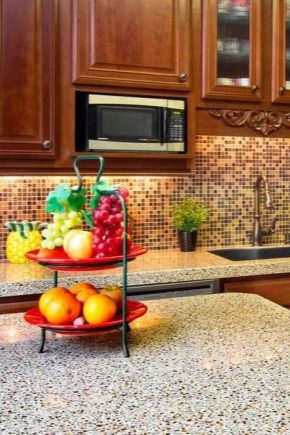
A kitchen countertop is an indispensable interior detail that allows you to equip a room as efficiently as possible, which is almost always characterized by a certain tightness. For a non-professional, the calculation of materials for the self-production of such countertops can be almost a more difficult task than cutting and installation itself, so we will consider this procedure more closely.
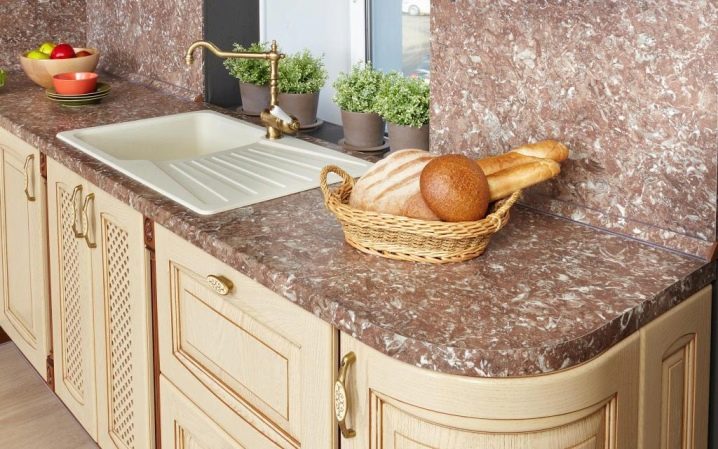
Standard parameters
The materials from which kitchen countertops are made, as a rule, come in several standard sizes. The task of the master is to think over the layout of the room in such a way that the cuttings make up only a small percentage of the purchased material, otherwise the costs will be unjustified, because you cannot make a beautiful whole panel out of two pieces. At the same time, different materials have different standard sheet dimensions, which is caused, first of all, by the weight of the material and its strength. Therefore, when choosing a material, it is not always worth starting exclusively from the wishes in terms of aesthetics.
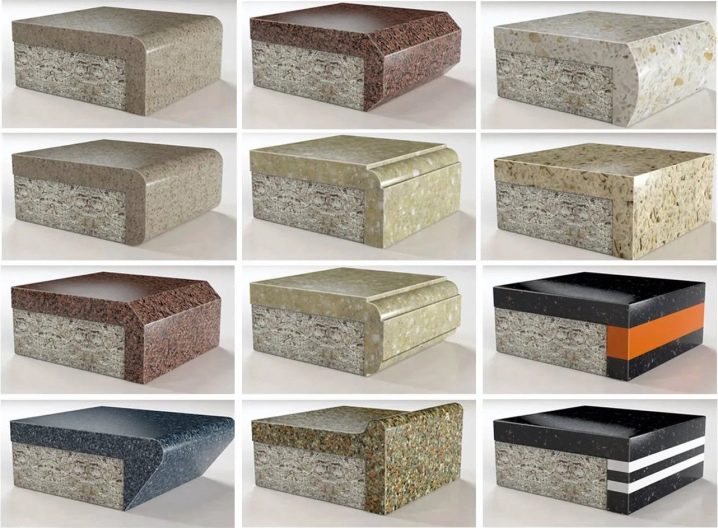
Of course, it is theoretically possible to order a larger panel of the required size, taking into account the dimensions of your own kitchen, having come up with some trick to increase the strength of the material, but such a solution is guaranteed to cost more than a similar amount of material stamped with standard forms. Again, sometimes even the increased thickness does not solve the problem, given that the weight also increases with it.
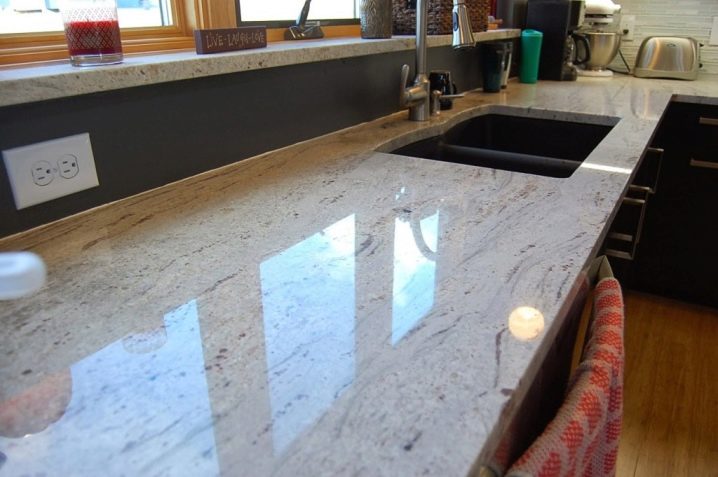
In any case, when determining the dimensions, keep in mind that the cut is unlikely to turn out perfectly even and invisibly thin, so the material should always be taken with a margin. For example, if you decide that you need four separate panels measuring 1000x600 mm, do not expect to get them from a piece measuring 4 by 0.6 or 2.4 by 1 meter: the lack of a stock of at least a couple of centimeters will play a bad joke with you.
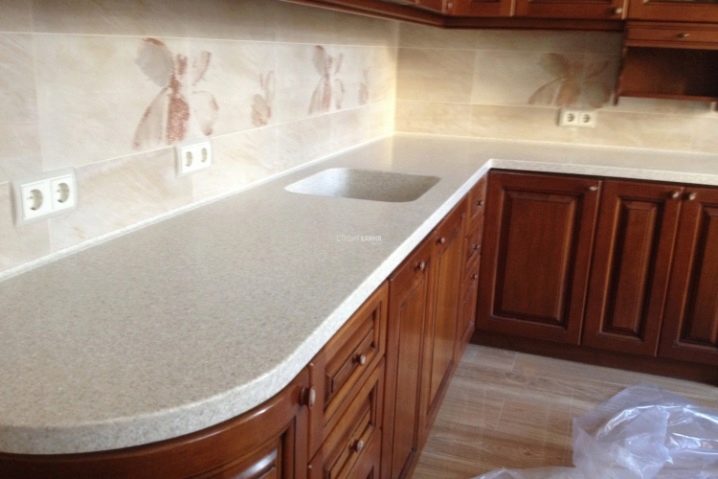
Length
This dimension is the most fundamental for most customers, because it is he who determines whether it will be possible to achieve a holistic look of the kitchen, which is achieved due to the countertop made of a single piece of material. It is in the case of length that the ability of the material to support its own weight is most striking, so longer panels are usually made from the lightest raw materials.
- MDF and chipboard imported products usually have a length within 3-4 meters, Russian manufacturers are ready to increase it to 3.6-4.2 m. Since the parameter is already of great importance, even with an individual order it is unlikely to be increased.

- Solid wood The good thing is that the panels from it are quite easy to select in length without a special order: manufacturers offer this material in a mass of standard options. So, the range of lengths starts from a modest 1 meter up to 4, the step between adjacent standards is sometimes only 20 centimeters.
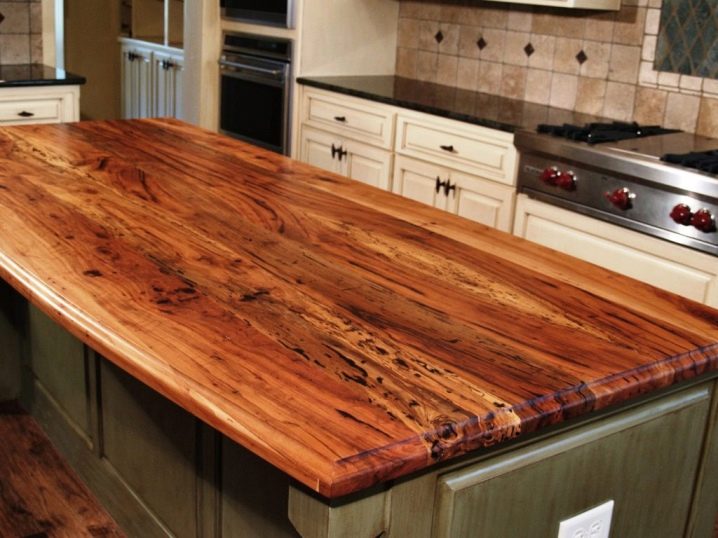
- Acrylic recently it has become more and more popular, but not many companies are engaged in the production of panels from it. Almost the only standard of length for such a panel is considered to be 2490 mm, especially since in this case the seams are quite well masked. The latter circumstance allows you to cut a single piece, and then fold it as you like.

- Quartz agglomerate very heavy, but it has increased strength.The step between the standards of its length is a few centimeters, but the range is not impressive - the slabs are from 3 to 3.2 meters long.
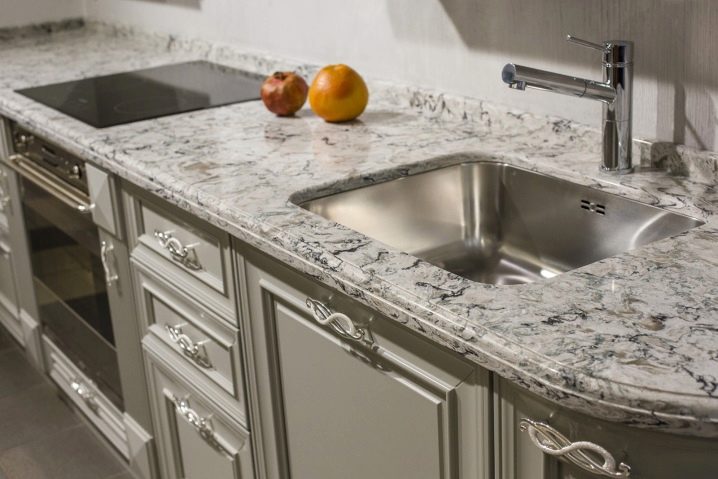
- Natural marble and granite are very difficult to cut during the repair, so the length standards imply a significant variation in dimensions within 1.8-3 meters.

Depth
Another important dimension for a countertop is its depth, that is, the distance from the outside to the inside, adjacent to the wall. Usually, significant depth is not required, since otherwise it will be problematic to reach the far corner, however an exception can be made if the table top will stand in the middle of the room with free access to it from either side.
- Foreign and domestic manufacturers of MDF and laminated chipboard agree in the standard value of the depth of kitchen countertops, estimating it at 60 cm.However, an individual order allows an increase in this dimension even twice, up to 1.2 m.
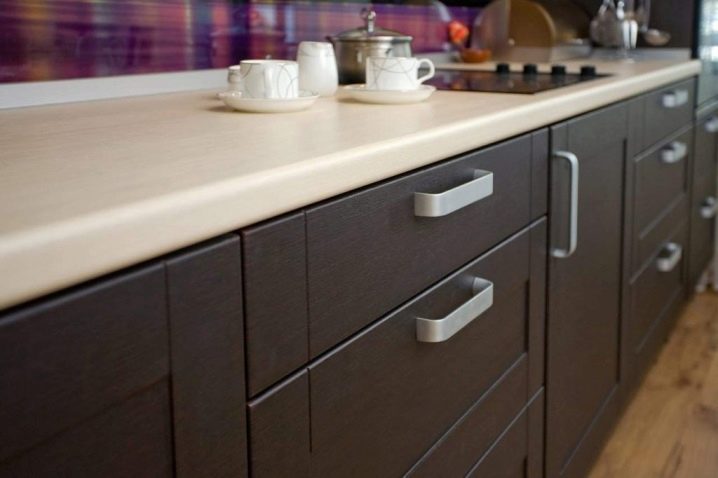
- Wood countertops have similar parameters., only here the choice of standard solutions is somewhat more extensive. It is not a problem to find a factory worktop with a depth of 60, 80 cm and even 1 meter.
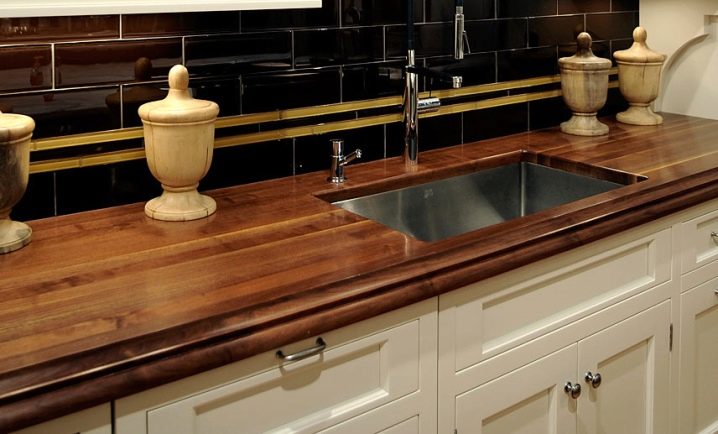
- Standard uncut depth acrylic countertops is 76 cm.
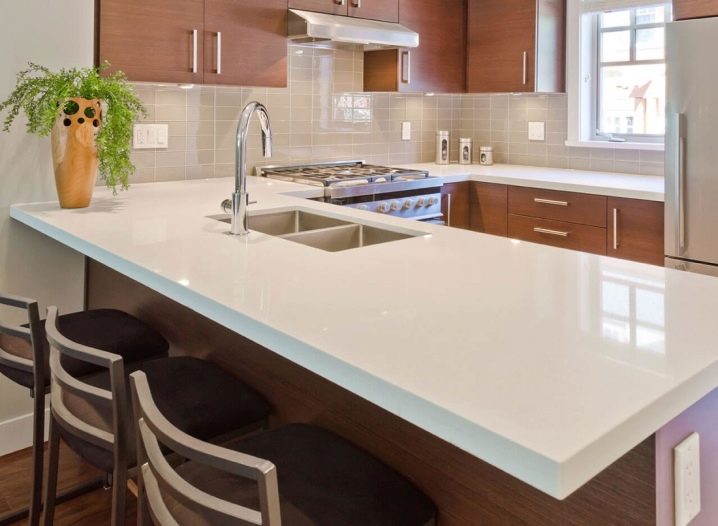
- Quartz agglomerate slab width, like their length, varies, but very slightly. In free sale, there are usually only three options - 1.24, 1.4 and 1.44 m, which implies their use mainly as a table in the middle of the room.

- A natural stone due to the difficulties already mentioned when cutting in domestic conditions, it assumes the widest choice of standard depth values - from 60 cm to 2 meters.
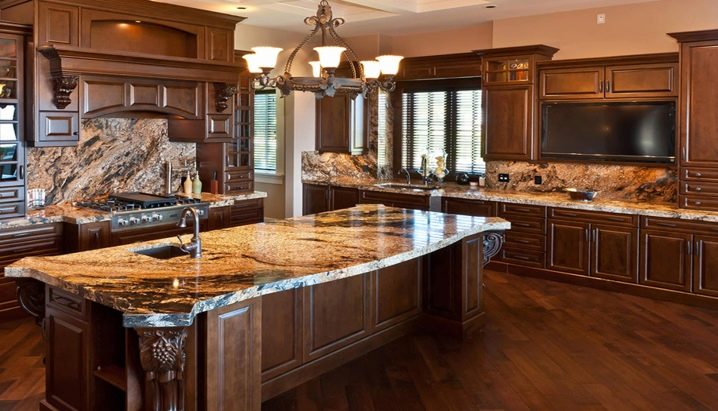
Thickness
Perhaps it is this standard that assumes the smallest discrepancies - all panels are approximately equally thick, their thickness is usually determined by aesthetic considerations. Rare exceptions are made only if an increased ability to withstand physical activity is required from the countertop for any reason. Consider the common standard thicknesses:
- pressed wood slabs - 28.4 mm;
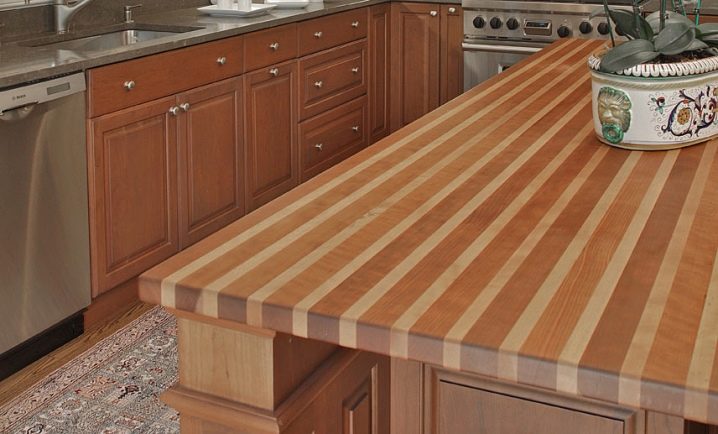
- solid wood - from 18 to 40 mm, depending on the species;
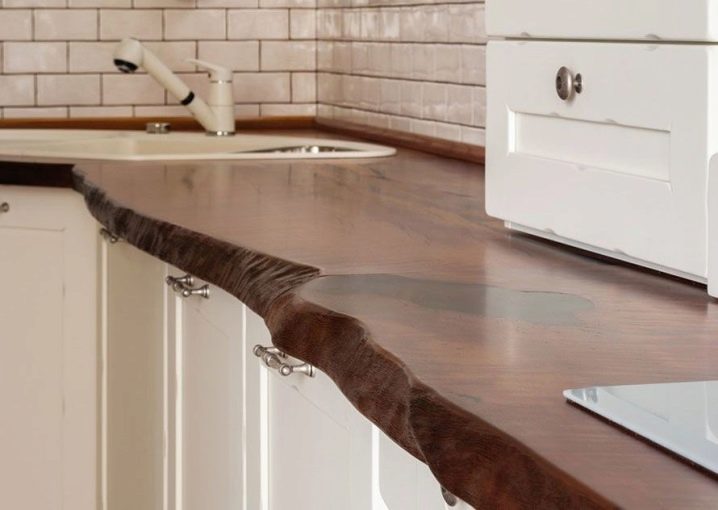
- acrylic - in the range of 38-120 mm, which is surprising given the lack of flexibility in length and depth;
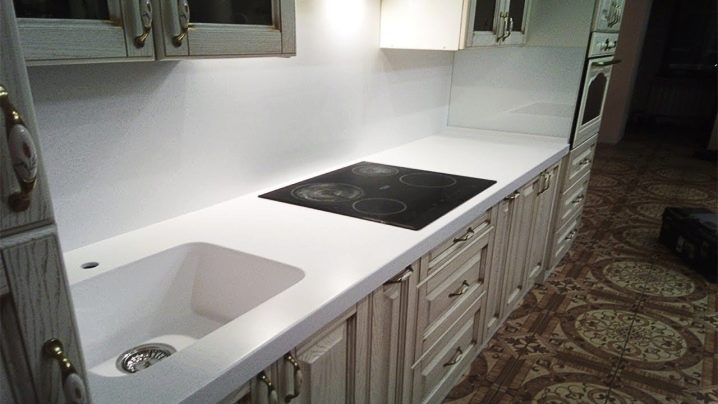
- quartz agglomerate slabs - from 20 to 60 mm with a step of 10 mm;
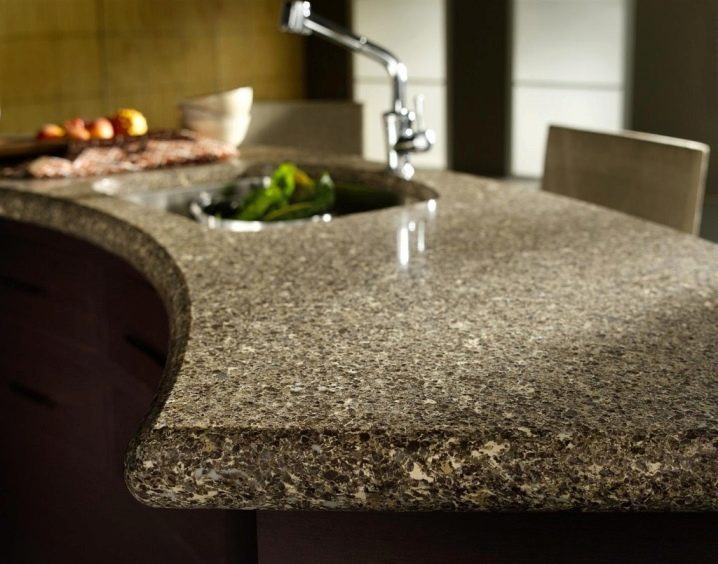
- marble - 20-30 mm;
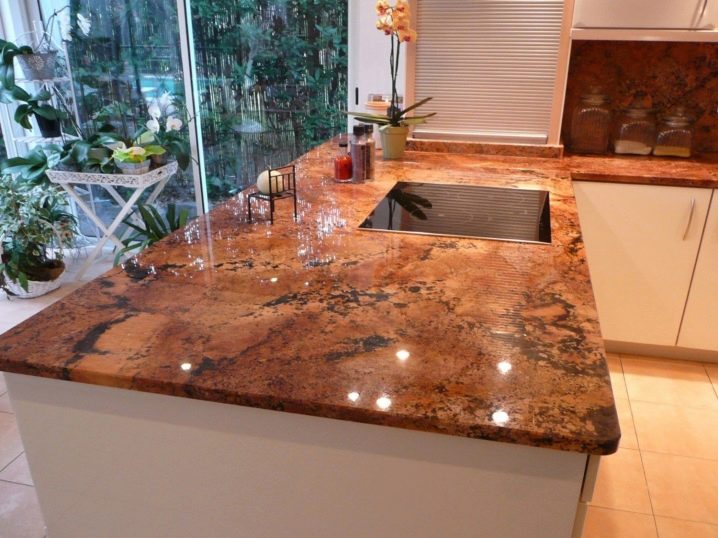
- granite - 30-50 mm.
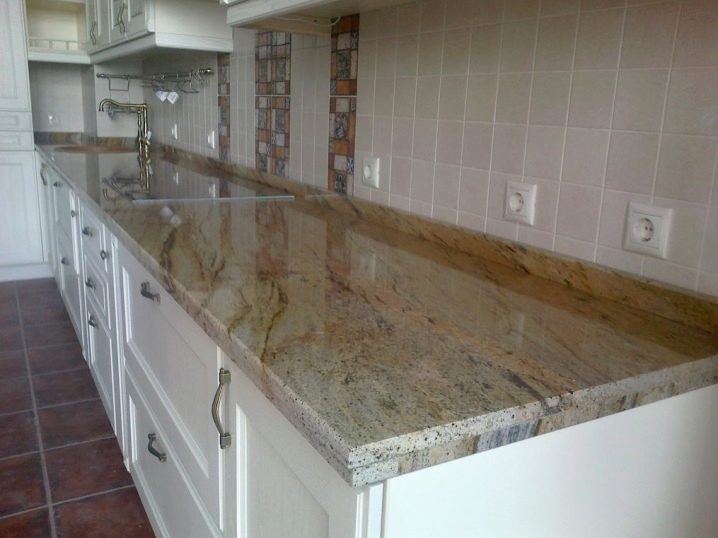
Possible variations
In most cases, manufacturers do not so easily agree to fulfill an individual order, since the cost of execution can increase the cost of the final product several times. In the case of an expensive solid wood or also expensive, and even difficult to process natural stone, the problem is solved by a simple variety of standards: as opposed to cutting panels, you can calculate the situation so that each of the countertops remains intact. In this case, possible inconsistencies, amounting to a few centimeters, are filled with kitchen equipment, which can be selected with an accuracy of a millimeter.
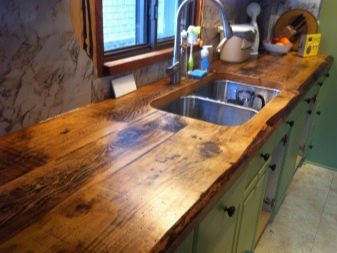
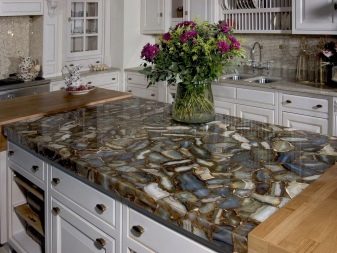
Exemplary flexibility in sizing is exemplified only by manufacturers of pressed wood panels. - such products can be perfectly tailored according to the wishes of the client. However, even chipboard or MDF cannot be increased beyond certain maximum dimensions, otherwise the sheet will sag under its own weight.

Moreover, the magnification usually concerns only the panel depth and should not exceed twice the standard.
How to choose?
When choosing standard kitchen countertops from the dimensions of the panel, if possible, try to find one that best matches the desired dimensions. If there is no ideal size, it is better to look not for the depth and width that are closest in value, but for the option that exactly matches the required one in at least one of these parameters.This approach, at least, will significantly simplify the fitting task, since the cut will be performed in one line.
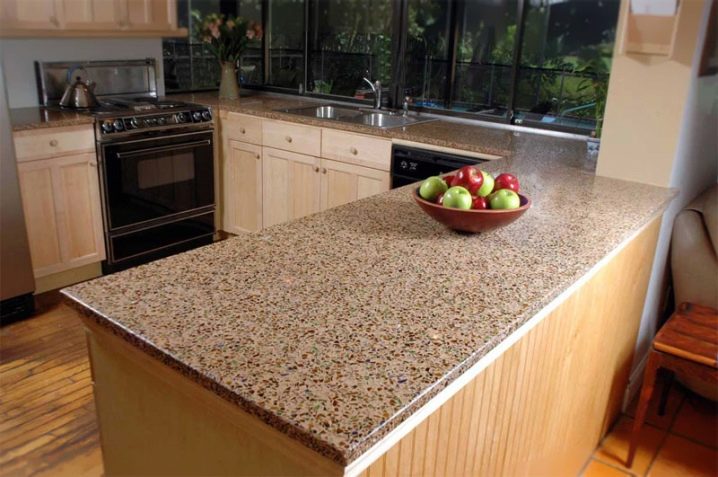
Imagine that the length of your kitchen is 3.3 meters, and the location of kitchen appliances and furniture assumes a countertop depth of exactly 60 cm. slightly larger material. The conditional version 3.4 by 0.7 meters seems suitable only at first glance, because it will still not work to squeeze it in, and the length of the cut will be almost 3.5 meters. Buying a larger panel measuring 4000x600 mm only at first glance seems like a rash waste of money: due to the fact that the cut will be made only in depth and will be exactly 60 cm, you will save a lot of time and effort.
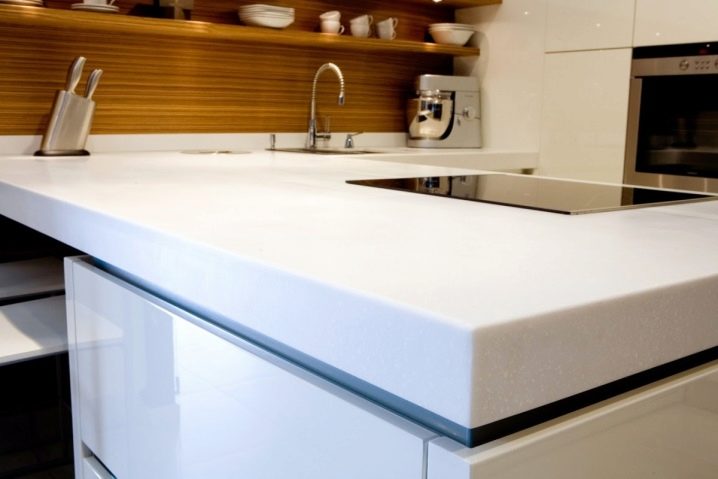
In the kitchen, a complex shape of making a worktop from several pieces is often simply unavoidable. In this situation, it is critically important to preserve at least a hint of the integrity of the interior, therefore, not only the material and color should coincide, but also the thickness of the product. If a 38x3000x850 mm slab is chosen for the main countertop, as it is ideally suited to the dimensions of the room, and for the L-shaped branch, another meter long is needed (despite the fact that such slabs are not made shorter than two meters), high costs for excess material are still will be reasonable.
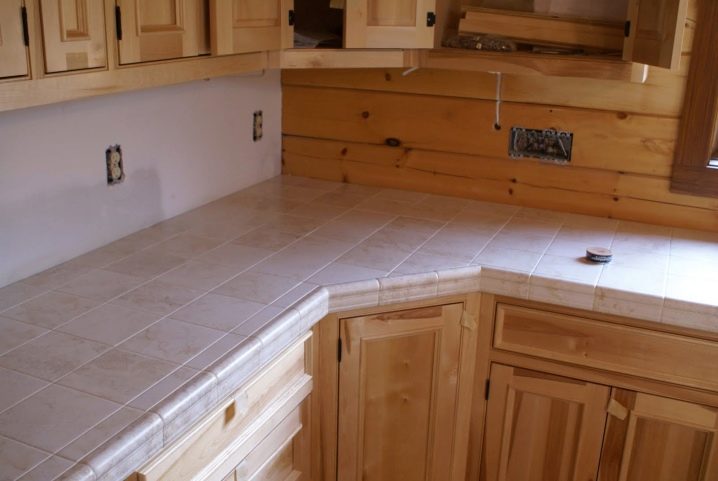
How to take measurements?
Accurately calculating the dimensions of the future countertop is not an easy task, since in the process, you need to take into account the smallest components of the interior, including possible built-in appliances.
- The easiest way to solve the problem is with the length, especially if the tabletop takes up all the space along the wall and is not interrupted by a gas stove. The length of the wall can not even be measured: if there is a registration certificate of the room, the data can be taken from there. Plasterboard walls or other volumetric finishes, which somewhat reduce the area of the kitchen, can turn out to be an underwater stone, but you can always cut the panel. By the way, keep in mind that it probably will not rest against the side walls, because its length is shorter by a few centimeters will not be a problem.
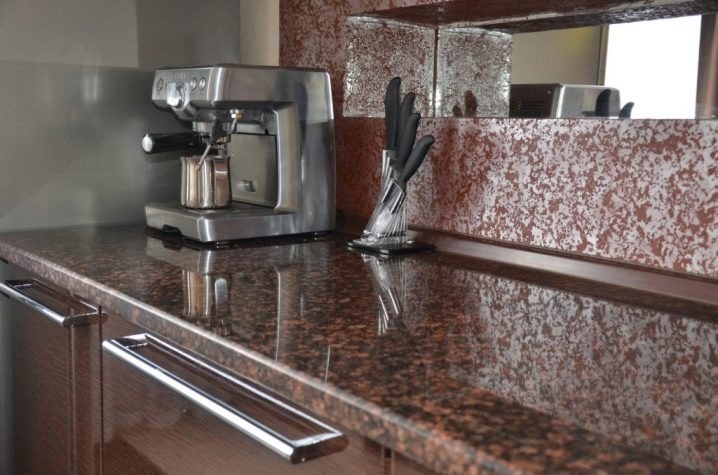
- The worktop can be interrupted by built-in appliances or furniture, the length of which should be measured along one of the top sides and subtracted from the total length of the panel. Some low appliances or furniture, whose top does not have to be open (washing machine, dishwasher, bedside table), can be, as it were, covered with a countertop on top, then their length is not subtracted from the panel. It should be borne in mind that the thickness of the panel, located at a convenient height for you, should fit between the top edge of the tabletop and the top edge of the built-in object, and even with a margin when it comes to a vibrating device.
- The depth of the countertop is never less than 40 cm. If the built-in components are not expected, you determine the depth solely from your own ideas about convenience, if there are built-in objects, start from their dimensions. It is advisable to select equipment and furniture so that there are no strong differences in depth between individual objects. According to this parameter, the table-top is guided either by the least deep insert, being flush with it, or by a certain average depth indicator.
- If the countertop is not wall-mounted and is used as a table or work area, its depth should also be determined based solely on the size of the kitchen and its own convenience. For people sitting opposite each other at the table, the depth of the tabletop should be at least 80 cm.
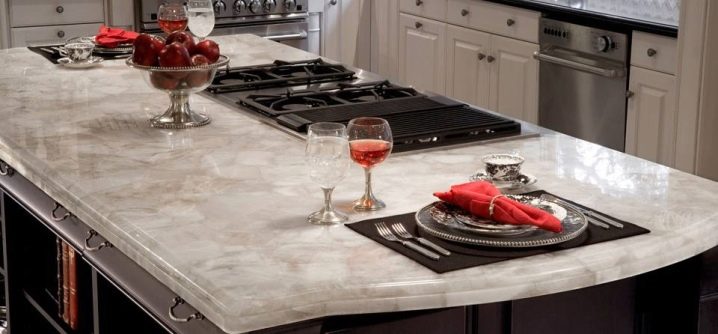
Features of room design
The countertop, as an element of a kitchen set, nowadays often plays the role of some stylistically unifying factor, designed to blind the interior of a room together.For this reason, the popularity of the longest kitchen panels is growing, which are often not limited to one wall, climbing onto the next one. A large panel can make the question of whether a table is needed at all relevant, because a meal can be organized right behind it, like behind a bar counter - this will remove the problem of too much space it takes up.
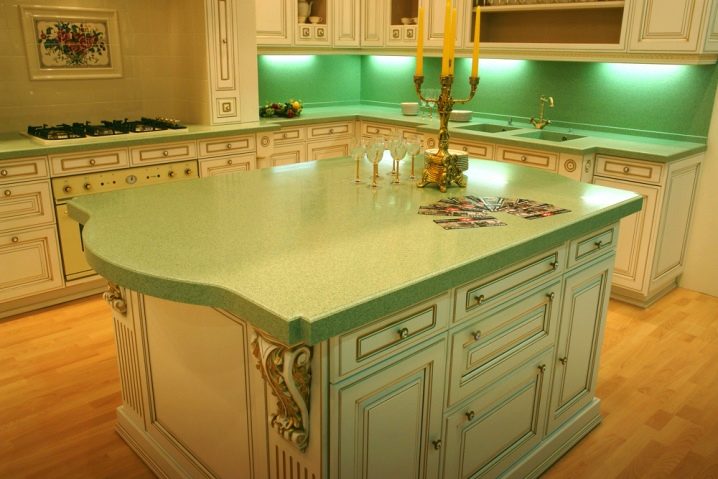
In order to achieve the maximum integrity of the design, today countertops are trying not to break as much as possible, preferring to build all appliances directly into it. This explains the growing popularity of separately sold hobs and ovens, which a couple of decades ago were produced exclusively in a single case.
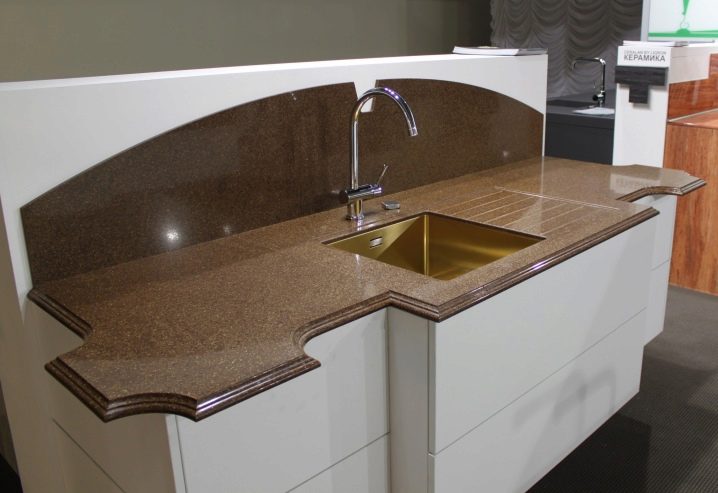
If, in a small-sized room, a large tabletop visually overloads the situation, the space under it, even used for storing various accessories, can be partially opened, turning it from cabinets into shelves.
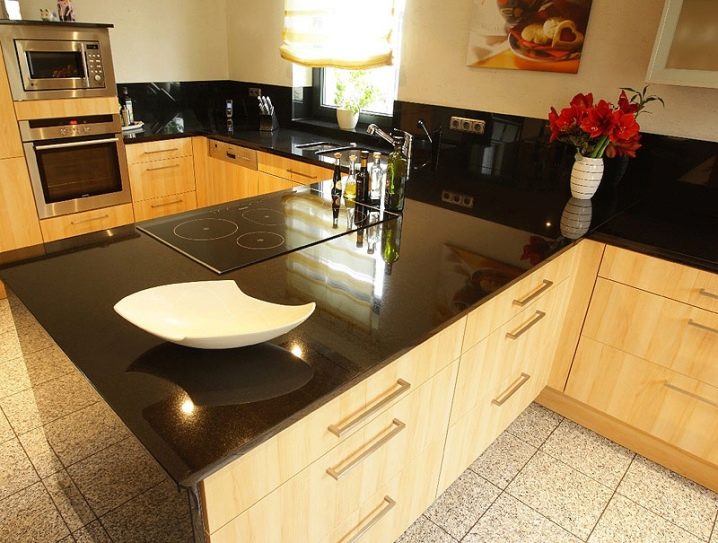
How to calculate the width of the kitchen countertop, you will learn from the video below.













The comment was sent successfully.